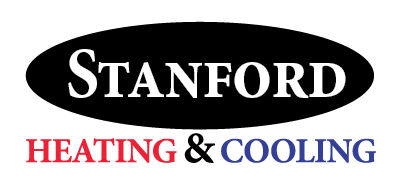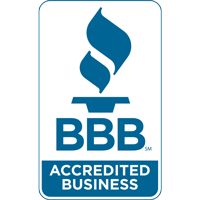
Ceiling fans are one of the most underrated ways to increase home comfort and lower energy costs. By boosting air circulation and working in conjunction with your HVAC system, ceiling fans and energy efficiency are truly a perfect combination. They offer a smart, eco-friendly way to maintain your comfort in hot weather while lessening strain on your AC—potentially sparing you from unnecessary air conditioning repair.
In this blog, the experts at Stanford Heating & Cooling break down how ceiling fans can improve your comfort while lowering your energy use with higher HVAC efficiency. We'll also share some HVAC efficiency tips that make the most of ceiling fans.
Comfort vs. Temperature: Getting Comfortable with the Wind-Chill Effect Indoors
Ceiling fans don’t actually change the room’s temperature—they make you feel cooler by blowing air across your skin. This is referred to as the wind-chill effect, and it can make a room feel up to 4 degrees cooler without touching the thermostat. That means you remain cool and enjoy the benefits of indoor air circulation from your ceiling fan while using less AC—helping reduce your electric bill in summer.
The Best of Both: Advantages of Pairing Fans and Air Conditioning Together
There are several upsides to using ceiling fans and air conditioning in tandem, especially during the warmer months. By combining both, you maximize HVAC efficiency and enjoy a cooler living space with less strain from your cooling system.
Top perks of using ceiling fans and AC together:
- Ceiling fans help lower HVAC load by spreading cool air more evenly throughout the room. Decreasing HVAC stress is important, because it can save you from a breakdown that may lead to premature AC or furnace installation.
- Using overhead fans boosts the comfort level of your home by reducing uneven temperatures and enhancing circulation.
- Pairing ceiling fans and AC can lower your utility usage. If you have a home automation system, you can even modify your smart thermostat settings to bump up the temp a few degrees while your ceiling fan is running.
Clockwise vs. Counterclockwise Ceiling Fan Rotation: Which is the Correct Direction?
To maximize the benefits of your ceiling fans year-round, it’s important to make sure the blades rotate in the proper direction for the season. The direction impacts how air moves, which can either or redistribute heat so you feel warmer.
When it's best to spin ceiling fans counterclockwise
When it's hot outside, ceiling fans should spin counterclockwise at a higher speed. This creates a breeze that pushes cool air downward, amplifying the wind-chill effect and causing you to feel cooler.
When to rotate ceiling fans clockwise
In the winter, set your fan to spin clockwise on a low speed. This softly moves cold air up and pushes warm air near the ceiling down toward you, making the space feel cozier without adjusting your thermostat.
Things to Look for in a Ceiling Fan
Selecting the right ceiling fan depends on a few key factors, such as blade design, airflow rating and room dimensions. First, look for fans that have a good blend of ECFM airflow and blade pitch to ensure efficient air movement in your home:
- ECFM refers to the amount of air a fan circulates—the cubic feet per minute, or CFM—per watt of electricity consumed. Fans with greater ECFM are more energy efficient.
- Blade pitch refers to the tilt of the blades. A sharper blade pitch increases airflow but can also strain the motor.
Also, consider room size when sizing a ceiling fan—a fan that’s too small won’t move enough air, while one that’s too large may be overpowering for the room.
Increase Your HVAC Efficiency With Help from Stanford Heating & Cooling
At Stanford Heating & Cooling, our HVAC specialists can help you enjoy year-round comfort while reducing strain on your heating and cooling systems. From efficient ceiling fan strategies and air conditioning installation to smart thermostats and furnace repair, we offer comprehensive services that match your needs. Set up your appointment by calling 812-825-8695 today.

